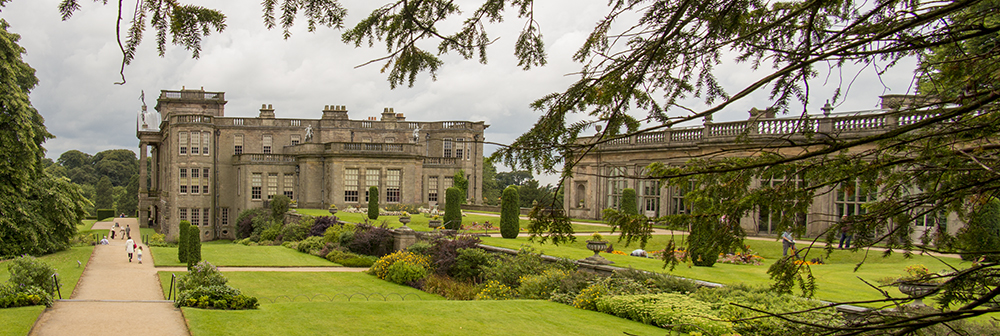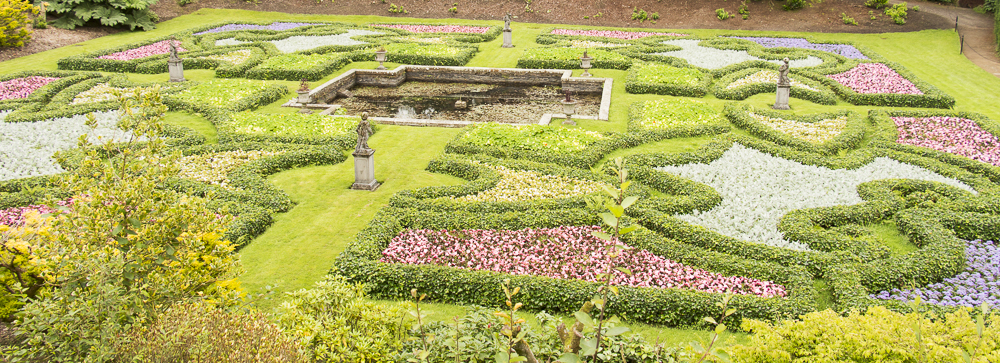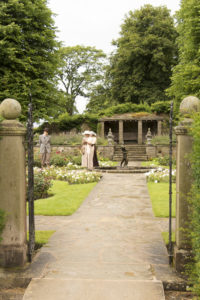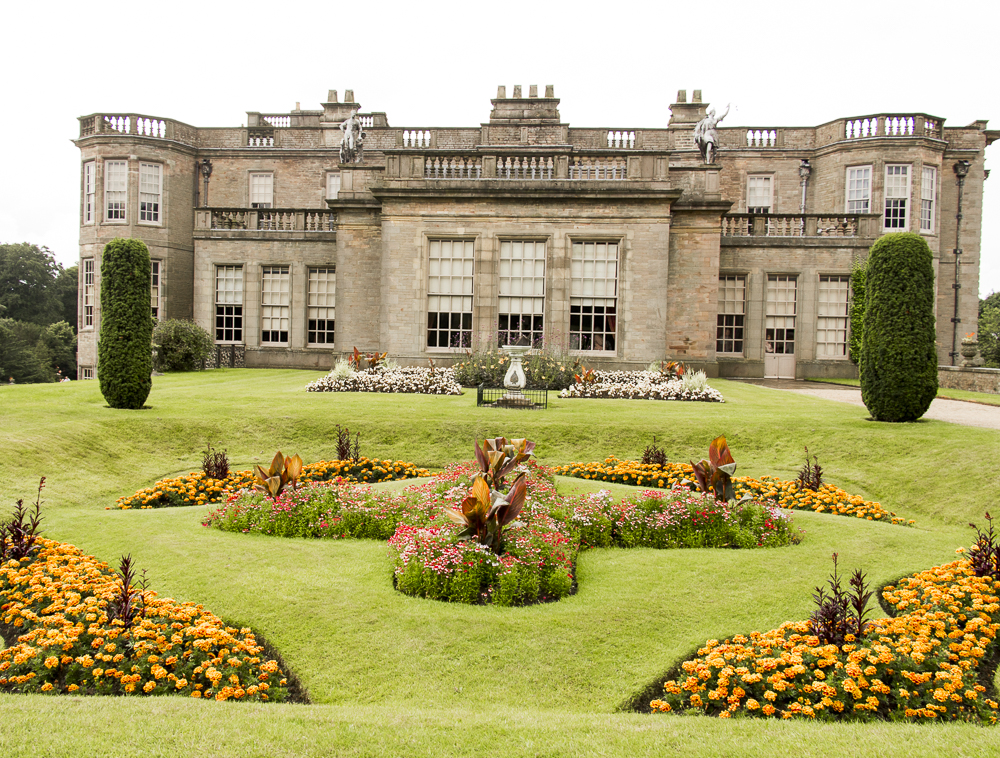Lyme Park was originally an area of the peak district moorland gifted to the Legh family in 1398 by Richard II in recognition of his service and it remained in the family for over five centuries. It was not until 1946 that the third Lord Newton gave the hall and approximately 550 hectares to the National Trust. The garden is therefore the result of over half a millennium of the family interacting with the house’s setting in the peak district moorland. Most of the estate is through a deer park of medieval origin that was improved by landscaping, partial enclosure by a stone wall and the addition of some interesting buildings
The family do not appear to have fallen under the spell of the landscape garden movement and about 7 hectares to the south, east and west of the house are formal gardens. These are basically Victorian in style with the area south of the house laid out as a lawn which sweeps down to an artificial lake and to the east of the house is an orangery constructed in 1862 with formal bedding in front of it which nicely matches the Victorian period of the orangery. Further to the east a rose garden was constructed in about 1913 and this is Arts and Crafts in style. To the west is the area known as the Dutch Garden, so called as it contained a formal garden of that style from about 1700. This lasted until about 1818 and around 1860 it was landscaped in its present form. This area is levelled by enclosing it on two sides by very high retaining walls which provide excellent views of the garden from the house level, but can feel rather oppressive down at the terraced level.
The most outstanding feature of the garden is the very stark contrast between the rather formal garden and the wild moorland beyond, nevertheless little is really made this contrast from a design point of view. This may in partly be the result of the growth of the surrounding trees over the last 100 years and what is there now is a very pleasant setting, but you are left with a feeling of opportunities missed. As you walk around the garden the house overbears the garden and neither is drawn into the landscape they sit in.






